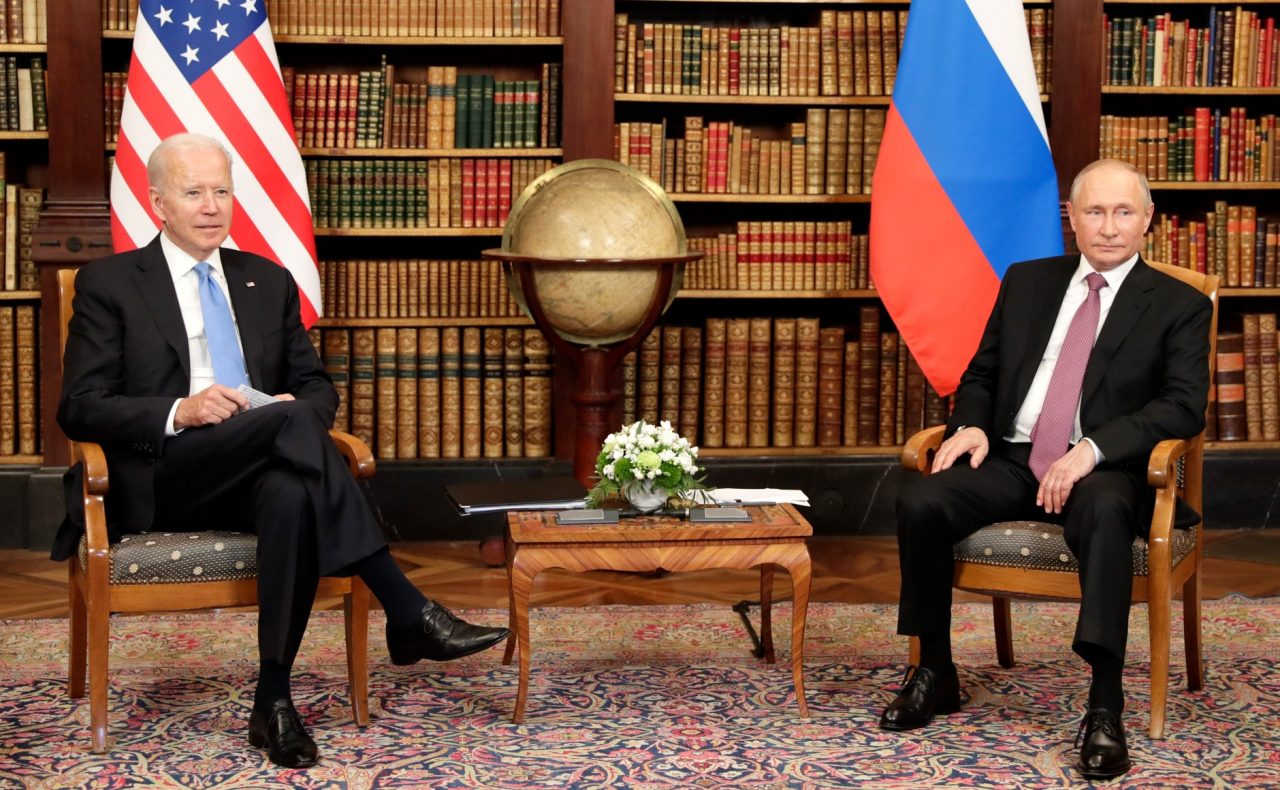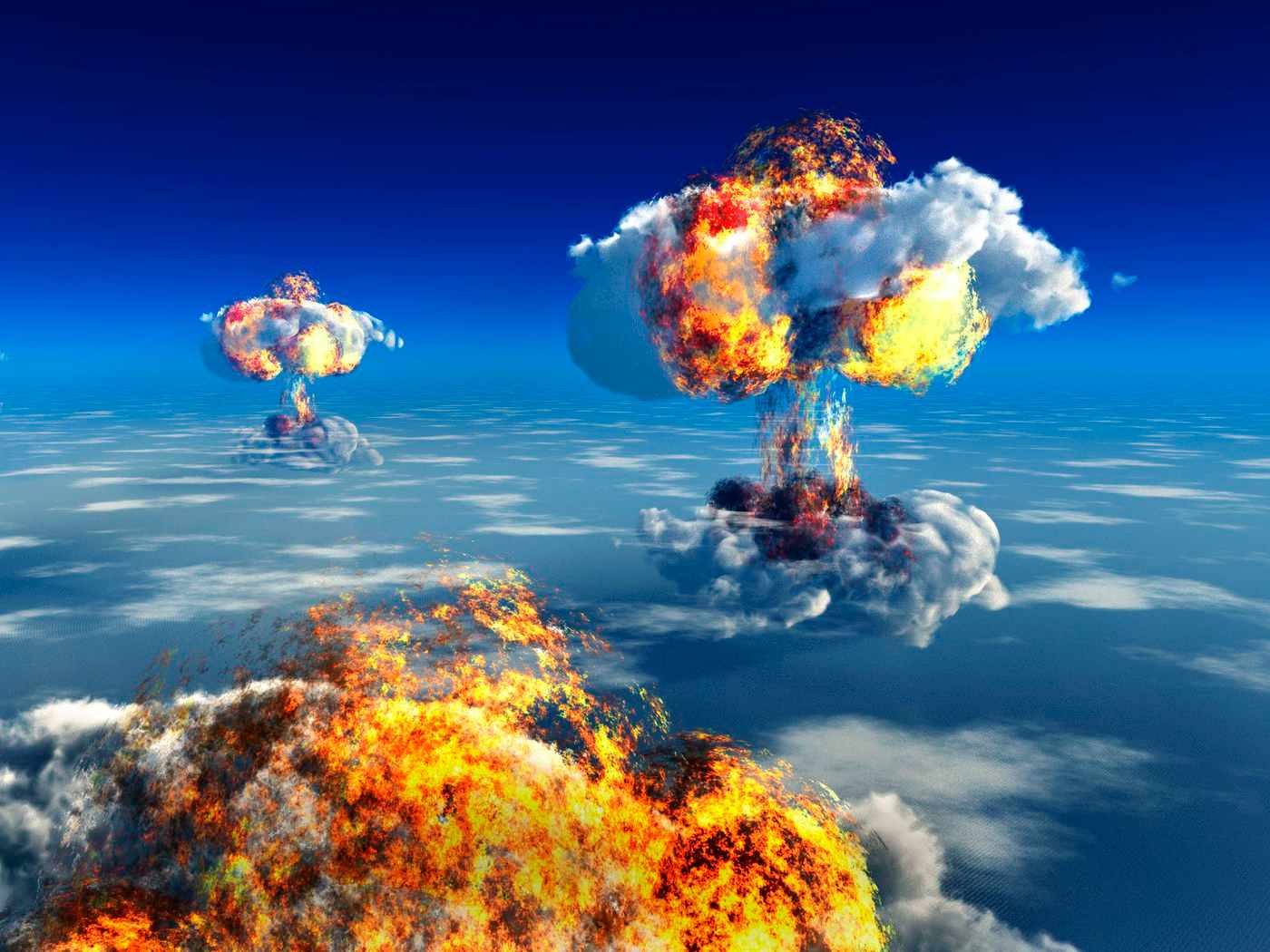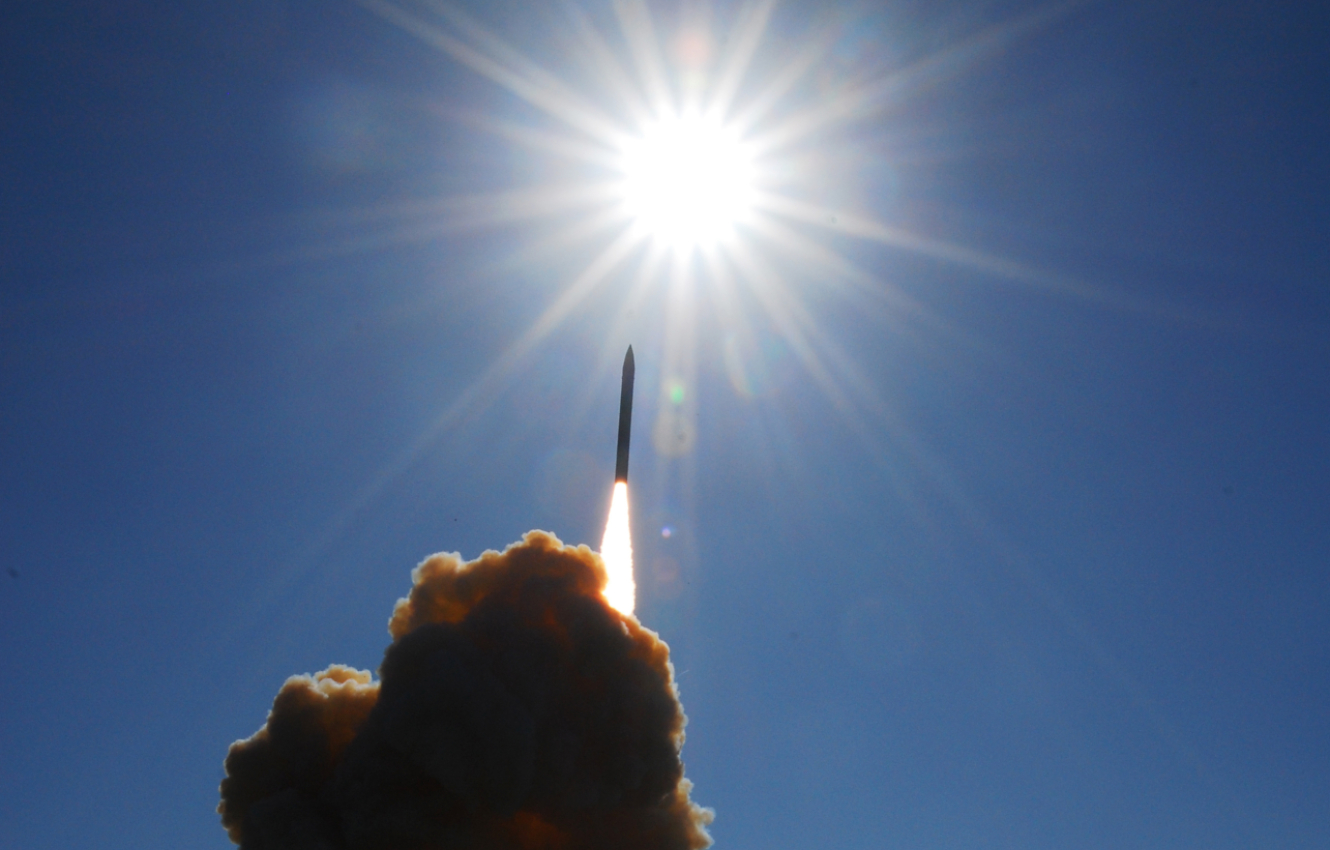Now that Russian President Vladimir Putin has “suspended” Moscow’s involvement in the New START (Strategic Arms Reduction Treaty), US President Joe Biden’s foreign policy priority of keeping the only remaining arms-control agreement between the two nuclear superpowers has been adversely affected.
However, though Biden has a legitimate grievance against this Russian betrayal, Putin, too, seems to have a point that Americans have betrayed his trust in similar arms-control agreements.
Besides, can the world have stability concerning nuclear weapons by focusing only on the US and Russia and leaving out China’s growing nuclear arsenal?
It may be noted that Putin had cooperated in renewing the New START in 2021, just two days before it was due to expire, afresh for five years. At that time, Russians had emphasized the importance of maintaining strategic stability and “special responsibilities that Russia and the US carry as the world’s largest nuclear nations.”
They discussed the decision that “guarantees a necessary level of predictability and transparency…while strictly maintaining a balance of interests.” They had also promised to begin discussions about a successor agreement.
Incidentally, the United States and Russia signed the New START on April 8, 2010. It entered into Force on February 5, 2011. It replaced the first START. The treaty’s duration was ten years from entry into force (February 2021) unless both parties agreed to extend the treaty for a subsequent five years (which they did last year).
Each party is entitled to withdraw from New START if it is decided that “extraordinary events related to the subject matter of this treaty have jeopardized its supreme interests.”
The treaty would terminate three months after a notice of withdrawal was issued. Significantly, Russia has not withdrawn from the treaty; what it has done is “suspend” its involvement for the time being.

All told, the New START represents a 75% reduction in warheads since the end of the Cold War. Under it, Russia and the United States agreed to limit the number of deployed warheads to 1,550 by February 5, 2018.
The treaty establishes that the number of warheads on deployed intercontinental ballistic missiles (ICBMs) and submarine-launched ballistic missiles (SLBMs) is counted as the number of reentry vehicles (RVs) on each missile. Heavy bombers are counted as one warhead against the total, regardless of how many warheads they carry.
The number of launchers New START limits both parties to a maximum of 800 deployed and non-deployed ICBM and SLBM launchers. Of those 800, no more than 700 delivery systems may be deployed at anytime. Neither party may convert ICBM or SLBM launchers into launchers for missile defense systems.
Accordingly, as of September 1, 2022, the US had 1,420 deployed warheads and 659 deployed strategic delivery systems, the US State Department revealed. Russia had 1,549 deployed warheads, attributed to 540 deployed strategic launchers. The two countries accounted for about 90% of the world’s nuclear weapons.
Notably, within 45 days of New START’s entry into force, Russia and the United States were required to report the numbers of deployed warheads and deployed and non-deployed missiles and delivery systems of strategic weapons.
This information was compiled into a database and updated with changes every six months. Inspections are intended to verify the data exchanged between the two countries.
New START allows for 18 on-site inspections per year. Inspections may include confirming the number of reentry vehicles on deployed ICBMs and SLBMs, confirming numbers related to non-deployed launcher limits, and counting the number of weapons onboard or attached to heavy weapons bombers.
The United States and Russia are allowed ten Type 1 inspections conducted on short notice at bases that deploy strategic launchers.
Each side can choose one ICBM or SLBM to inspect and count the warheads. This type of inspection is designed to deter both sides from deploying a missile with more than the declared number of warheads. Eight Type 2 inspections are allowed annually, conducted at facilities designated only for non-deployed delivery systems.
The United States and Russia each used all of their inspections every year since the treaty entered into force, but that was until the Covid 19 pandemic outbreak. Some 328 on-site inspections were said to have occurred between 2011 and early 2020, but more were suspended during the Covid-19 pandemic.
However, the United States wanted the revival of the inspections in August 2022. But Putin disagreed, arguing that “as a proxy war (in Ukraine) is being fought by NATO to destroy his country, it is absurd to suppose that New START could continue to function as normal.”
Russia’s ambassador to the US, Anatoly Antonov, said early this month that while his country “remains committed to the goals of the New START treaty,” we consider “it unjustified, untimely and inappropriate to invite the US military to our strategic facilities” while the two nations are on opposite sides of the conflict in Ukraine.
Thus, at first glance, Russia is reneging on its promise of keeping a highly significant treaty for global peace. However, on closer scrutiny, the US has done the same with similarly vital understandings, adversely affecting Russia. Let alone the issue of expanding NATO (against which the US had promised before the fall of the Berlin Wall), Russia feels that America has backstabbed it on the CFE Treaty, Intermediate-Range Nuclear Forces Treaty, and Open Skies Treaty.
The Conventional Armed Forces in Europe (CFE) Treaty signed at the end of the Cold War on November 19, 1990, eliminated the then Soviet Union’s overwhelming quantitative advantage in conventional weapons in Europe by setting equal limits on the number of tanks, armored combat vehicles, heavy artillery, combat aircraft, and attack helicopters that NATO and the Warsaw Pact could deploy between the Atlantic Ocean and the Ural Mountains.
It required NATO, and the then-alive Warsaw Pact states to have no more than 40,000 battle tanks, 60,000 armored combat vehicles, 40,000 pieces of artillery, 13,600 combat aircraft, and 4,000 attack helicopters on the whole territory of the respective alliance.
The CFE Treaty also provided for lower ceilings on military hardware in individual regions, including so-called flank ceilings designed to limit Russian stockpiles in the north and south of the treaty territory.

The CFE state parties destroyed over 50,000 weapons systems in subsequent years to reach these targets. However, when NATO was expanded by disregarding Moscow’s reservations, the US and its allies argued that the number of weapons that were to be limited should not be seen in terms of blocks but as individual countries, certainly to the significant disadvantage of Moscow as Warsaw pact had become defunct, with three former Warsaw Pact members — Poland, the Czech Republic, and Hungary — joining NATO.
Similarly, signed by US President Ronald Reagan and Soviet leader Mikhail Gorbachev in 1987, the Intermediate-Range Nuclear Forces Treaty (INF) dramatically helped reduce nuclear threats and stabilize the arms race for nearly three decades.
It resulted in the banning and elimination of all US and Russian ground-launched missiles with ranges between 500 and 5,500 kilometers––2,692 missiles.
However, problems started when Russia complained that the spirit behind the treaty was being killed with the Bush Administration withdrawing in 2002 from the Anti-Ballistic Missile Treaty––understood by Putin as the cornerstone of the US-Russia arms control regime. Putin later wanted the INF to be multilayered by the UN, but his efforts failed in 2007.
His mistrust further degenerated when the Trump Administration decided in 2019 to suspend American obligations under the INF. Putin closely followed suit. Many American scientists in those days criticized the US move that the Trump Administration should have diplomatically resolved the differences with Russia instead of withdrawing.
The Open Skies Treaty was signed in 1992 by Russia and the USA, along with 32 others on two sides of the Atlantic. It allowed the member states to conduct unarmed surveillance flights in each others’ air space at short notice to collect data on military forces and activities.
Entering into force in 2002, the treaty was designed to enhance mutual understanding, build confidence, and promote the openness and transparency of military forces and activities.
However, after Russian intervention in Georgia in 2007, US officials started complaining that Russia was violating the agreement, for example, by restricting American and European surveillance flights over Kaliningrad and parts of Georgia.
Russia denied the charges, but instead of resolving the differences through sincere negotiations, the Trump Administration decided unilaterally to withdraw from the treaty in November 2020. The Biden Administration later declared that it had no intention of rejoining it. And that too, when America’s European allies had requested Washington to reconsider the decision.
In a joint statement, the foreign ministries of Belgium, the Czech Republic, Finland, France, Germany, Italy, Luxembourg, the Netherlands, Spain, and Sweden had reminded that OST “is a crucial element of the confidence-building framework that was created over the past decades to improve transparency and security across the Euro-Atlantic area.”
However, after the US withdrawal, Moscow sought written guarantees from the remaining states-parties that they would neither continue to share data collected under the treaty with Washington nor prohibit overflights of US bases in Europe. But there was no response from the Europeans, possibly due to their respect or fear of American sensitivity. Finally, Russia decided to withdraw from the OST in June 2021.
Be that as it may, now that the new START has been suspended, there is a school of thought that the US could activate the treaty’s withdrawal mechanism and then build and deploy as many strategic nuclear weapons or launchers as it wanted, even beyond Cold War levels.
But others say that Instead of giving in to the temptation of a nuclear arms race to outspend or outbuild Russia if the treaty dies, the US should independently determine what it needs for an effective nuclear deterrent and maintain that level.
“Based on the 1,550 limits in New START, it’s clear this is sufficient”, says Matthew Wallin, a chief operating officer with the “American Security Project.”
Rose Gottemoeller Steven C. Házy, the former NATO Deputy Secretary-General and US Undersecretary of State for Arms Control and International Security, argues that “it would be a mistake for the United States, or any state, to embark on a nuclear arms race during this time, when a revolution is afoot in other types of military technology.
New defense innovations promise to transform warfare and undermine the logic and utility of nuclear weapons. With advances in sensing technology, states may soon be able to track and target their adversaries’ nuclear missiles, making the weapons easier to eliminate.

And with nuclear weapons more vulnerable, innovations such as drone swarms—large numbers of small automated weapons that collectively execute a coordinated attack—will increasingly define war. A fixation on building more nuclear weapons will only distract from this technological revolution, making it harder for the United States to master the advances that will shape the future battlefield.”
And then, there is the like of Andrew F. Krepinevich, JR., a Senior Fellow at the Hudson Institute and an Adjunct Senior Fellow at the Center for a New American Security, who argue that any nuclear arrangement by only the US and Russia are no longer enough as “China is not merely departing from its decades-old status as a minor nuclear state; it is also upending the bipolar nuclear power system.”

China is said to have reached that mark and could have some 1,500 nuclear warheads by 2035 if they continue to expand their stockpile at the current pace, according to the 2022 “China Military Power” report.
All told, despite their many flaws, both the USA and Russia have averted nuclear war. “Now, by closing in on parity with the two existing great nuclear powers, China is heralding a paradigm shift to something much less stable: a tripolar nuclear system.
In that world, there will be a greater risk of a nuclear arms race and heightened incentives for states to resort to nuclear weapons in a crisis. With three competing great nuclear powers, many of the features that enhanced stability in the bipolar system will be rendered either moot or far less reliable”, Krepinevich, JR adds.
Viewed thus, it is time to look beyond the New START. China-factor may play a role in its revival.
- Author and veteran journalist Prakash Nanda has been commenting on politics, foreign policy, on strategic affairs for nearly three decades. A former National Fellow of the Indian Council for Historical Research and recipient of the Seoul Peace Prize Scholarship, he is also a Distinguished Fellow at the Institute of Peace and Conflict Studies.
- CONTACT: prakash.nanda (at) hotmail.com
- Follow EurAsian Times on Google News




